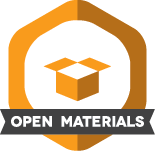Management Information Systems Quarterly
Deviant Affordances: When Tensions, Deadlocks, and Nonconformance Generate Performance (Open Access)
Abstract
Novel information technologies (ITs), such as mobile devices and third-party cloud services, offer users an increasing variety of action possibilities, i.e., affordances. Organizational IT policies, however, often specify their actualization—i.e., turning those affordances into action—as undesired. Organizations face the challenge that to reach their goals, employees still frequently take advantage of these affordances by using undesired ITs and thereby deviate from IT policies. Although prior work has extensively studied how goal-oriented users actualize affordances that are associated with outcomes that support organizational goals, little attention has been paid to the structures, mechanisms, and conditions underlying affordances that deviate from organizational IT policies. We conceptualize these affordances as deviant affordances. Leveraging the orders of change framework and using a multimethod research design integrating interview and experimental studies, we identify three key mechanisms underlying deviant affordances—i.e., tension, deadlock, and actualization mechanisms—that can link together to produce a deviant outcome supporting both the users’ individual goal and an organizational goal. Our work explains the importance of users’ perceived deadlock in stimulating the generation of deviant outcomes that support organizational goals through improving task, contextual, and innovative job performance.


